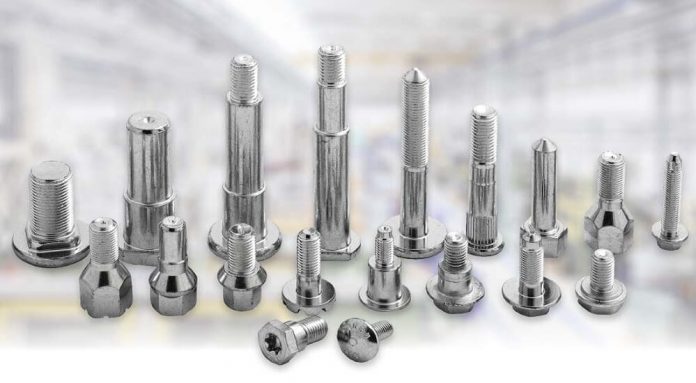Cold forging involves forming or forging bulk materials without heating the primary production stages, usually at room temperature or below its recrystallization temperature. It is any process involving metals, where the metal is shaped within normal room temperature into various sizes.
The non-heating part does not include the material’s in-process, which reduces the effects of work hardening. Cold forging is also referred to as cold working or cold forming. The reverse process is referred to as hot forging.
Operations
There are different types of forging and most of them are done as hot work but in cold forging, a bar material(slug) is introduced into a die and is squeezed with another die until it changes from its initial shape and size into the shape and size of the dye.
Operations is a cold forging process which ranges from bending, drilling, extrusion, punching, rolling, squeezing, coiling, shearing, and lots more, to form different parts like various rods, wire, bars, large sheets, metal tubes, screw heads, shaft-components, shaft-like parts with 3-plane bends, rectangular, round and bent configurations as well as combining of different shapes.
Additionally, the cold-forged material may range from room temperature to varying degrees, depending on the surface involved. The process for forging a cylindrical-like shape part follows thus;
- Forward extrusion reduces the diameter and increases the length of a bar to create a cylindrical shape
- Backward extrusion which cuts the bar into the desired shape
- Upsetting into different configurations
Preference
For most integral design features, cold forging is mostly used in automotive steering parts, defense parts, etc., due to its production capabilities of high volume and tolerance, making it more economically useful. Cold forgings have their downsides besides their benefits. Let’s take a look at both sides anyway.
Advantages
Here are a few advantages of cold forging:
- Heat energy is not needed as with hot forging.
- Reduces impurities, thereby reducing contamination.
- Eliminates waste materials compared to the machining process in hot forging.
- Measurements of dimensions are better controlled and managed.
- It gives better handling and surface finishing.
- It is more economical
Disadvantages
Some disadvantages of cold forging include;
- Cold forging may not be a suitable option for metals that are hard and which will require a strong force to forge.
- Internal or residual stress might be created in the finished product, which could cause buckling.
- Loss of ductility.
- Heavy-duty machines with clean surfaces are required.
- The direct forces imparted on the workpiece may have adverse effects.
Application
There are essential equipment required in this type of forging and they include the vertical presses. They could be introduced automatically or manually.
Also, Cold forging is used to produce some parts. These parts are used for electrical industry purposes. Let’s have a look at them:
- Alternators
- Different kinds of gears.
- Plungers
- Motorcycle parts
- Hollow stems and shafts
Conclusion
In conclusion, a worker would opt for the most suitable method depending on its economic value, the function of the components, industry requirements, or size of demand for the best possible solution.







